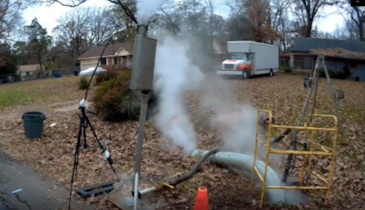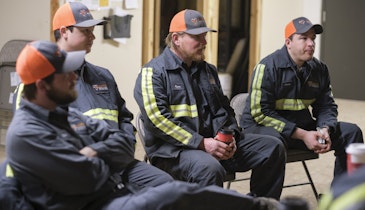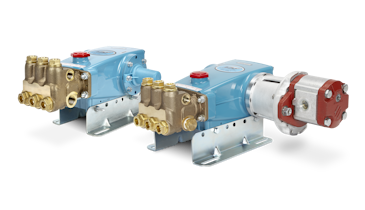When an underground utility line unintentionally intersects with another, the results can be disastrous. This is known as a cross bore, and dangerous consequences can happen instantly — or occur long after an installation is completed. Either way, the safety of your crew and the people above these buried utilities depend on horizontal drilling contractors taking every possible measure to avoid making a cross bore.
Proper upfront planning and taking preventive measures during an installation is the best way to avoid cross bores.
Estimating
"Avoiding cross bores starts during the bid or estimate process,” says Dan Vroom, customer training lead at Vermeer Corporation. “While reviewing project plans, contractors should be looking for potential issues that will add extra work, which includes being aware of what other utilities are nearby. Every utility intersection point needs to be excavated." Vroom adds that excavation methods can be more challenging if an intersection occurs under a roadway or sidewalk. This is not a time to take any shortcuts.
Planning
Before a job begins, you need to call for a utility locate; but don’t stop there — make sure you follow up again to verify all utility locates have been completed before you start working. Even with the utility locate complete, keep in mind that unmarked utilities may also exist and must also be identified.
Next, while referencing a map of existing utilities, walk the drill path before it happens. Mark where intersection with another utility will occur, so you know where you’ll need to pothole.
“Creating a simple bore plan is also a good idea,” says Vroom. “Vermeer has several bore planning tools available to help with this process. Our bore planning sheets are laid out in 1-foot vertical increments to help contractors plan the depth of a bore. The sheets are also marked in 10-foot horizontal increments so contractors can estimate the distance of all utility intersections.”
Potholing
Once you determine where your drill path will potentially intersect with another utility, it’s time to excavate. Using vacuum or soft excavation (spade or shovel) methods, pothole every utility that will cross the bore path.
Vroom says it’s important to identify if there is more than one utility in the ground at that location. “Next to busy roadways and near power transfer stations, there can be several utilities stacked on top of each other. Crews need to make sure they can see all lines before determining whether they are going to go above or below the utilities. Every pothole needs to be deep enough to be able to see the head of the drill pass through.”
Transmitter calibration
Not following the proper transmitter to receiver instruction can significantly impact the accuracy of your locator. Always make sure you calibrate your transmitter inside of the drill head’s housing, lying flat on the ground and free of passive and active interference.
Accounting for sewer lines
Many municipalities fail to locate sewer laterals. Crews will often estimate the depth of lines themselves by measuring how deep the closest manhole is. From there, contractors will calculate the depth of the sewer laterals based on ideal drainage slope.
Vroom says a more reliable way to locate sewer lines is with a sewer probe. “Placed inside a nearby sewer line, the probe will transmit location information back to the receiver,” he says. “McLaughlin and Digital Control Incorporated both manufacture several different types of probes useful for locating nonmetallic utility lines.”
Backreaming risk
Even after performing your initial drill shot, there is still a risk of striking an existing utility while backreaming. Soft soil conditions and the weight of the reamer can cause settling. So make sure you give yourself plenty of space between other utilities.
No shortcuts
As you can see, there are several steps you can take to help avoid cross bores. However, the most important thing to remember and to remind your crew is simply: Don't take any shortcuts when identifying existing utilities underground.






